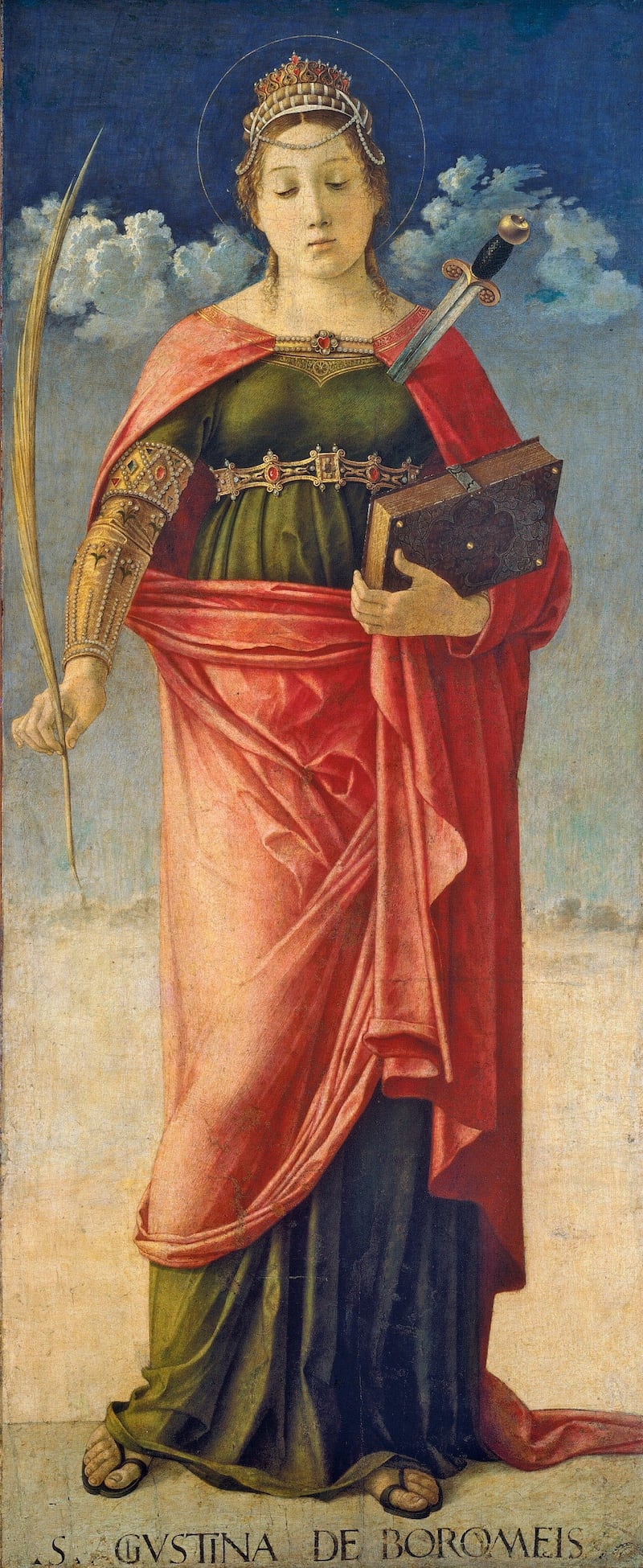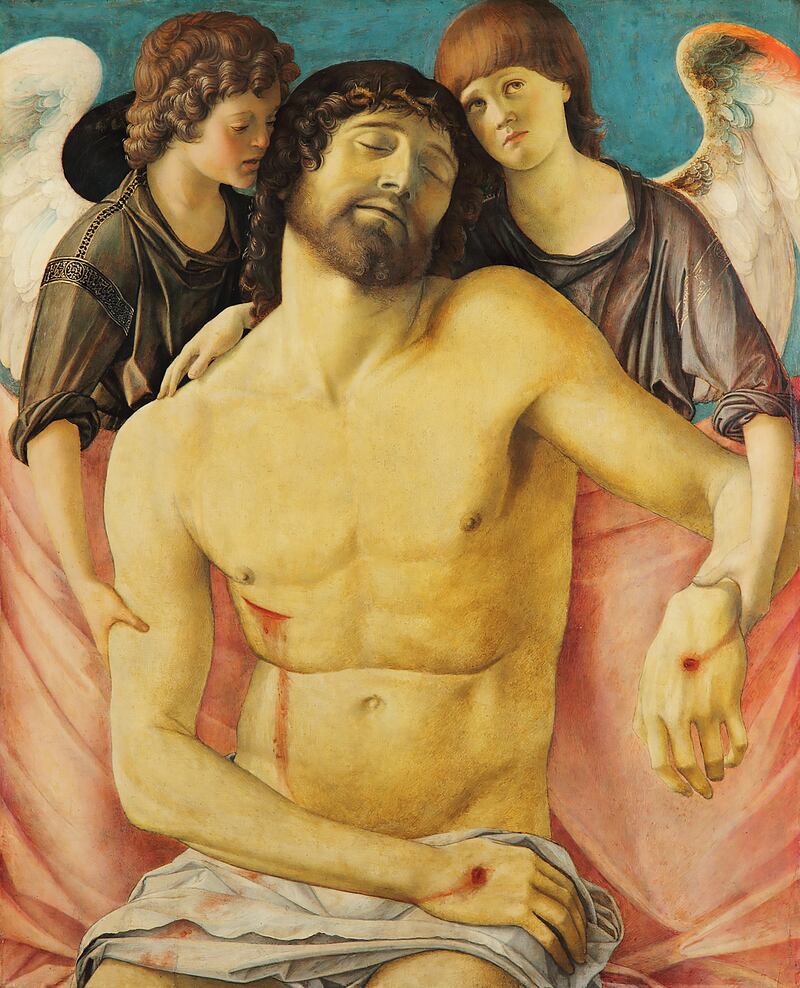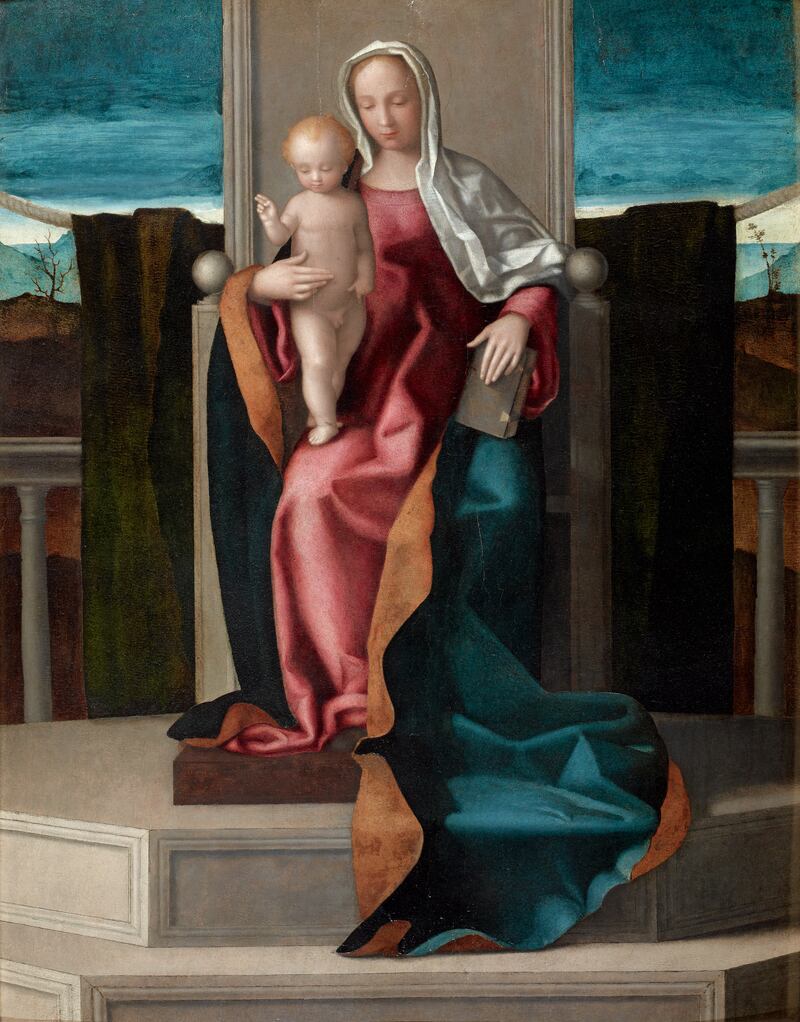Giovanni Bellini is the undisputed father of the Venetian Renaissance, not only for the power and beauty of his oeuvre, but for the influence he exerted over subsequent generations. An exhibition at the Musée Jacquemart André in Paris until July 17th shows the evolution of Bellini’s style, along with masterpieces by his contemporaries.
“I can think of no other artist who absorbed as much from others yet maintained his individuality,” says Neville Rowley, the head of 14th- and 15th-century painting at the Gemäldegalerie in Berlin and co-curator of the exhibition. “He achieved this because he was born in the quattrocento, when Venice transitioned from Byzantine domination to becoming Italian.”
Bellini trained in the atelier of his father Jacopo, whose recognisably Gothic paintings open the exhibition. Jacopo named Giovanni’s older brother Gentile after his own teacher, Gentile da Fabriano, the master of International Gothic. Giovanni’s early work is barely distinguishable from that of his father and brother.
Historians base their belief that Giovanni was born out of wedlock on two snippets of documentary evidence. When his sister Nicolosia married the Paduan painter Andrea Mantegna in 1453, Giovanni was not cited among family members. Nor was he mentioned in the testament of his stepmother, Anna Rinversi. She left Jacopo’s precious sketchbooks to Gentile.
READ MORE
The identity of Giovanni’s birth mother is unknown. Could her absence explain why the infant Christ as painted by Bellini often seeks to catch the Virgin’s attention, while she looks away?
Bellini transformed the symbolic, cold icons of Byzantine and Gothic devotional art into the universal mothers and children of the Renaissance. More than half his oeuvre is comprised of paintings of the Virgin and infant Christ. These were very much in demand and hung in bedrooms for private devotions. Since they were not shown in public, Bellini reproduced the same image up to 15 times.
If Bellini sought affirmation, he certainly received it. The neglected son became the most famous in a family of illustrious painters, the official painter of La Serenissima. When Gentile died in 1507, Giovanni finally inherited their father’s drawings. He would be buried alongside Gentile nine years later, in the Basilica San Zanipolo.
For a time, the paintings of Bellini and his brother-in-law Mantegna were so similar that their works were sometimes misattributed to the other. Mantegna was a stickler for perspective who admired Greco-Roman art and the Florentine sculptor Donatello.
Their influence is seen in Bellini’s Saint Justine (1475, Museo Bagatti Balsecchi, Milan). Mantegna had executed a similar painting 20 years earlier. Bellini’s Justine, like Mantegna’s, is a tall, sculptural figure whose draped clothing appears carved in marble or cast in bronze. Both hold a quill in the right hand and a book in the left, and seem to ignore the dagger plunged in their bosom.
“Bellini brings something else to the painting, this transparent, almost translucid light,” says Rowley. “One has the impression that light emanates from the painting itself.”
The exhibition was made possible in part because the Gemäldegalerie closed for renovations, enabling Rowley to bring its masterpieces to Paris. Twenty-seven other museums and several private collectors also loaned paintings.
Jacquemart André's founders had a special affinity for the Venetian Renaissance. The museum has included Mantegna’s Ecce Homo, from its own collection, in the show. The suffering Christ conveys similar pathos to another masterpiece by Mantegna, the Dead Christ at the Pinacoteca di Brera in Milan, which inspired Ernest Hemingway to write of “the bitter nail holes in Mantegna’s Christ”.
Although Bellini did not meet the artists, works by the Flemish painter Jan van Eyck and Hans Memling, a German who painted in Flanders, circulated in 15th-century Venice. Masterpieces by both artists are included in the exhibition. Bellini admired their realism, poetic landscapes, and the translucence they achieved by applying layer upon layer of glaze.
Antonello da Messina, a Sicilian painter who moved to Venice in 1475, had travelled to Flanders to learn the secret of oil painting. Legend has it that Bellini went to Messina’s studio, posing as a patrician patron, in the hope of stealing the recipe. The painters became friends and Bellini was one of the first Italians to paint with oils as well as tempera.

Bellini’s and Messina’s similar scenes of a dead Christ held up by angels are shown together. Bellini’s (1470-1475, Gemäldegalerie) is the signature painting for the exhibition. Unlike Mantegna’s infinitely suffering Messiahs, Bellini’s appears to sleep peacefully. The blood from his wounds has congealed. The angels who prop up his anatomically perfect body appear torn between hope and grief. The narrowly framed image shows the seated Christ from his blood-stained loincloth up, almost life-size, creating a sense of intimacy in the spectator.
In portraiture, Bellini adopted Messina’s practice of closing in on the subject’s face and painting him from a three-quarter angle against an outdoor background. Messina’s Portrait of a Young Man (1478, Gemäldegalerie) exemplifies these innovations. The insolent young man looks the spectator in the eye and seems to judge us. “Antonello da Messina painted me” is cheekily scrawled on the trompe l’oeil paper at the bottom of the picture.
Bellini began painting detailed landscapes in the background of his religious paintings, in part under the influence of a younger painter and follower called Cima da Conegliano. The backdrop to Virgin and Child with Saint John the Baptist and a Saint (1500, Galleria dell’Accademia, Venice) shows white-washed, tile-roofed buildings more characteristic of Greece than of Venice.
Light seems to emanate from this painting, as from the earlier Saint Justine. “The sky is almost like a Magritte,” says Rowley. “It is blue at the top, and under that it must be dawn or twilight, because the sky is yellow. If it were not, we would not see the blue mountains. It is quite atmospheric. There is a shepherd in the landscape, and two tiny figures walking. These tiny figures are us.”

Virgin and Child with Saint John the Baptist and a Saint shows the contrast between the Florentine school of disegno or drawing, and the Venetian use of colorito or vivid colours to shape a painting. Lapis lazuli, brought at great expense from the mountains of present-day Afghanistan, was used to create the magnificent blue of the Virgin’s robes. The infant Christ, alone among the four characters, stares at the spectator.
Leonardo da Vinci visited Venice in 1499. Giorgione and Titian, both Bellini’s students, took from him the practice of sfumato, the blurring of the transition between colours which bathed paintings in a kind of haze. Giorgione’s Cook Madonna (1500, Gemäldegalerie) exemplifies the enthusiasm for sfumato. A graceful Virgin is wrapped in robes of the pinkish-red colour so typical of Venetian artists, against a misty forest and mountains. Giorgione’s death from the plague at 33 would prevent him competing with Titian, Tintoretto, Veronese and Tiepolo, the Venetian greats who would follow.
[ Venice canals run dry as Italy could be facing another droughtOpens in new window ]
Bellini’s Mocking of Noah (1515, Musée des Beaux-Arts Besançon), painted in his 80th year, was so revolutionary that it was long thought to have been painted by a later artist. Like Bellini’s vision of God the Father, hung in the same last room of the exhibition, Noah is an old man with a fluffy white beard, possibly a self-portrait.
It was unusual for Bellini to paint an Old Testament story. He avoided habitual cliches. No ark, no dove or animals descending. After the deluge, the Earth was fertile, as shown by the vines in the background and the grape bunch beside Noah’s hand.
Ham, Shem and Japheth crouch behind their father. Bellini has visually outlined the possible psychological reactions to an ageing parent’s drunkenness. Shem, the middle son, mocks his father. The eldest son seeks to cover the old man with a cloth, while the youngest turns away in shame. The great Italian art historian Roberto Longhi called Mocking Noah the inaugural work of modern painting.

Bellini’s oeuvre follows his trajectory from the twilight of the Middle Ages and Byzantium to his status as founder of the Venetian Renaissance.
When the German painter Alfred Dürer visited Venice in 1506, Bellini was the only artist who agreed to receive him. That openness tells us a lot about the character which enabled Bellini to learn and adapt even in old age.
“Everyone told me he was a very old man, which is true,” Dürer wrote. “He is very old, but he remains the best of painters.”
















